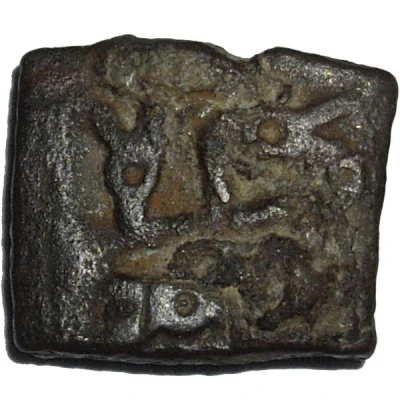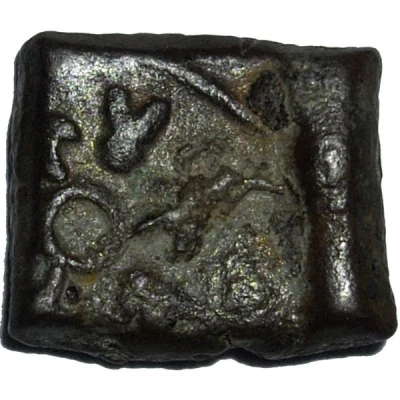


© Rojomano
Æ Masha - Sunga Kingdom 187 BC - 75 BC
| Copper | 2.3 g | - |
| Issuer | Shunga Empire (India (ancient)) |
|---|---|
| Type | Standard circulation coin |
| Years | 187 BC - 75 BC |
| Value | 1 Masha (1⁄16) |
| Currency | Karshapana (185 BC to 73 BC) |
| Composition | Copper |
| Weight | 2.3 g |
| Size | 12 × 10 mm |
| Thickness | 2.9 mm |
| Shape | Square (irregular) |
| Orientation | Coin alignment ↑↓ |
| Demonetized | Yes |
| Updated | 2024-10-10 |
| Numista | N#409375 |
|---|---|
| Rarity index | 93% |
Reverse
Swastika with bull head ends.
Edge
Plain
Comment
The Maurya dynasty (India) domained from Magadha between 321-185 BCE. The kings Chandragupta and Ashoka (converted to Buddhism) created the first empire at the Indian subcontinent. They were succeeded by the Sunga, when the usurper Pushyamitra Sunga occupied the throne in 187 BCE.
Sunga domains centred at the Ganges valley, arrived until the Punjab, Deccan and Bengal. The dynasty will finish in 75 BCE when the Satavahana conquered Malwa.
Interesting fact
The Sunga Empire, which issued this coin, was a powerful and influential empire in ancient India that ruled from 187 BC to 75 BC. During their reign, they made significant contributions to Indian culture, including the development of Buddhism and the establishment of several important educational institutions.